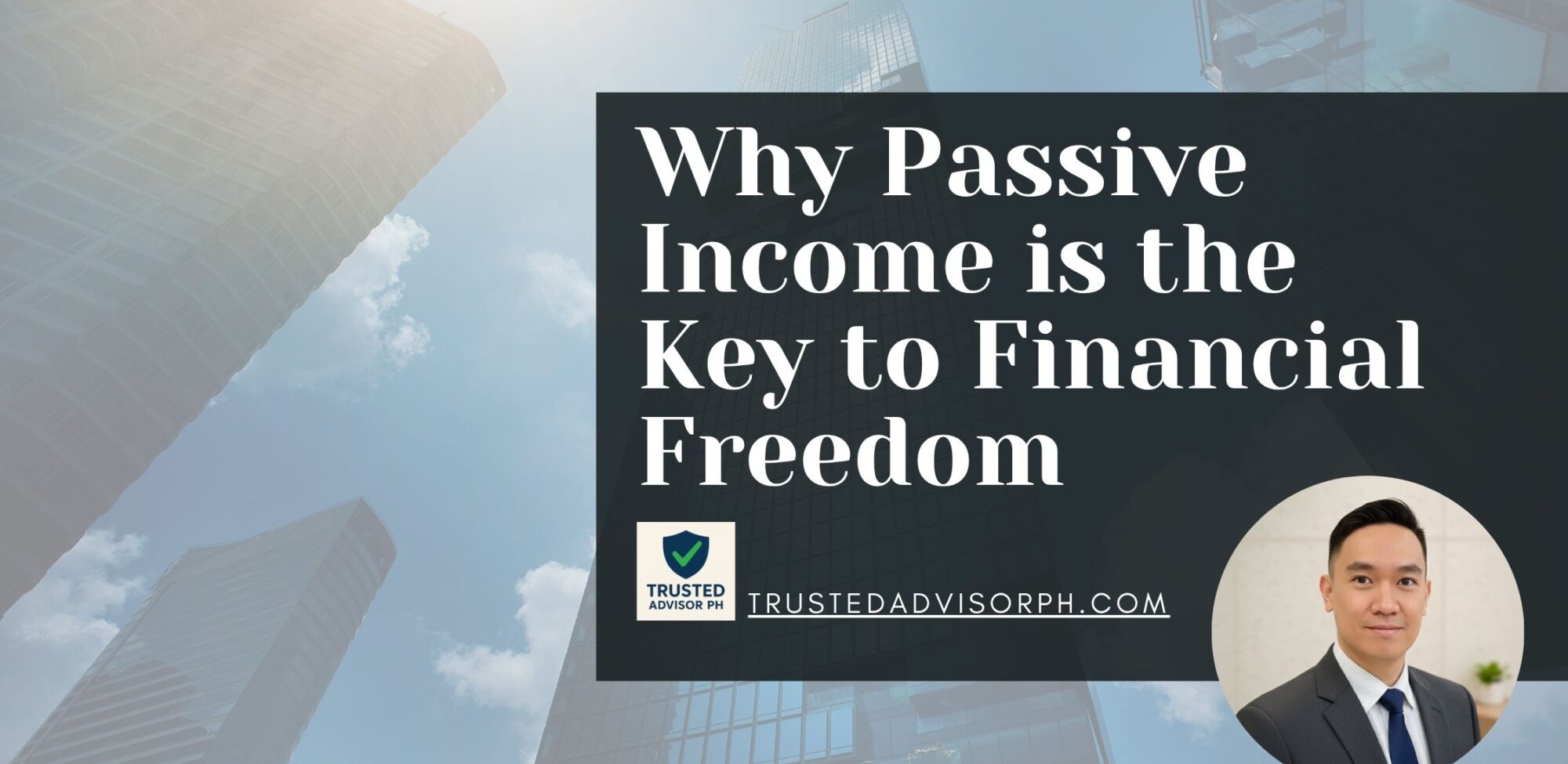Why Passive Income is the Key to Financial Freedom

Have you ever asked yourself: “How much do I earn while I’m asleep?”
For most people, the answer is nothing—or very little. That’s exactly why we wake up early, brave traffic, and exchange our time and skills for money. It pays the bills and allows us to buy the things we need (and sometimes the things we want).
For years, I thought this was the only way to live. Right after college, my goal was simple: find a stable, high-paying job. I worked hard, switched companies a few times, and kept chasing that “perfect” position.
Everything changed when I had coffee with a friend one afternoon. I told him I was planning to transfer to another company because the salary was higher. Instead of congratulating me, he challenged me with a simple but powerful question:
👉 “Why not learn how to invest instead?”
That single line opened my eyes to the concept of different types of income—and more importantly, the life-changing power of passive income.

The 3 Types of Income Everyone Should Know
1. Earned Income
This is money you get by actively working. If you’re an employee, your salary falls under earned income. Freelancing, running your own sari-sari store (if you’re the one managing it), or offering consulting services also count.
Simply put: if you need to show up to earn, that’s earned income.
✅ Advantage: Reliable and steady (if you have a job or clients).
❌ Disadvantage: Limited by your time, energy, and skill. If you stop working, the income stops.
2. Portfolio Income
Also called capital gains, this comes from buying something at one price and selling it at a higher price.
The stock market is the most common example: you buy shares of Jollibee Foods Corp. at ₱200 and sell them at ₱250, making a profit. It also includes cryptocurrency trading, flipping real estate, or selling assets that have gone up in value.
✅ Advantage: High potential returns.
❌ Disadvantage: Not guaranteed, risky, and still requires effort and monitoring.
3. Passive Income
This is the most powerful type of income because it works even when you don’t.
Examples include:
- Rental properties (boarding houses, Airbnbs, or apartments)
- Royalties from books, songs, or digital content
- Dividends from stocks and investments
- Online businesses that run with minimal supervision (e.g., automated e-commerce stores, digital products)
- Vending machines, laundry shops, or franchises that can operate with hired staff
With passive income, money flows in with little to no direct effort from you.
✅ Advantage: Consistent cash flow, long-term security.
❌ Disadvantage: Requires upfront effort, capital, or creativity to set up.
Why Passive Income Matters
The problem with earned and portfolio income is that they rely heavily on your time and energy.
- If you get sick, your income stops.
- If your job becomes redundant, your salary disappears.
- If the market crashes, your capital gains vanish.
But passive income is different. It doesn’t depend on your physical presence. It’s like planting seeds today that grow into fruit-bearing trees tomorrow. Even if you’re not actively working, the fruits keep coming.
That’s why many financial experts (including Robert Kiyosaki, author of Rich Dad, Poor Dad) call it the foundation of long-term wealth.
And here’s the best part: passive income isn’t just for the wealthy. Even ordinary Pinoys can build it, step by step.
Real-Life Pinoy Examples of Passive Income
To make this more relevant, let’s look at how Filipinos today are creating passive income streams:
- OFW Apartments / Boarding Houses
Many Overseas Filipino Workers (OFWs) invest in apartments or dormitories. Even if they’re working abroad, rent money comes in monthly. Some families live entirely off rental income after years of investing. - Franchising Small Businesses
Food kiosks, water refilling stations, or laundry shops can generate income if properly managed. With the right system, you don’t have to be there daily. - Stock Dividends
Some listed companies in the Philippine Stock Exchange (PSE) give quarterly or annual dividends. Ayala Corp., SM Investments, and PLDT are examples of dividend-paying companies. - Digital Content Creation
From YouTube channels to TikTok reels, Pinoys are turning creativity into passive income. Once a video is uploaded, it can keep earning ad revenue for months or years. - E-books and Online Courses
If you’re good at a skill—say baking, photography, or financial planning—you can package your knowledge into an e-book or online course. Once uploaded, it can sell repeatedly without extra work.
How to Start Building Passive Income (Practical Steps)
Many people think passive income requires millions in capital. That’s not true. You can start small. Here’s a roadmap:
1. Secure Your Foundation First
Before diving into investments, build your emergency fund and pay down high-interest debts. Passive income is useless if credit card interest is draining your finances.
2. Start Small with Investments
Open an account with COL Financial, BDO Securities, or other online brokers. Buy dividend-paying stocks like Meralco (MER) or Globe (GLO). Reinvest dividends to grow faster.
3. Leverage What You Already Know
Are you a teacher? Create online reviewers. A fitness coach? Record workout programs. A cook? Sell recipe e-books. Skills can be turned into digital products.
4. Automate Where Possible
The goal of passive income is to remove yourself from the day-to-day grind. Use tools like Shopify (for online stores), YouTube monetization, or property managers (for rentals) to keep your income flowing even when you’re busy.
5. Think Long-Term
Passive income is not a get-rich-quick scheme. It’s a marathon. Plant seeds today, water them consistently, and let them grow into money trees for the future.
Common Myths About Passive Income
🔴 Myth 1: Only rich people can build passive income.
✅ Truth: Many passive income streams start small. Even ₱1,000 invested monthly in stocks can grow significantly over time.
🔴 Myth 2: It’s 100% effortless.
✅ Truth: It requires effort at the start—whether capital, time, or creativity. But once built, it requires far less effort compared to a regular job.
🔴 Myth 3: It’s too risky.
✅ Truth: Everything has risks—even jobs. The key is diversification. Don’t put all your eggs in one basket.
The Lifestyle Passive Income Can Give You
Imagine waking up on a Monday morning and not feeling pressured to rush into traffic. Why? Because your bills are covered by the passive income you’ve built.
- Parents can spend more time with kids.
- OFWs can come home for good without worrying about losing income.
- Employees can take vacations without stressing about unpaid leaves.
This is the true meaning of financial freedom: when money works for you, instead of you constantly working for money.
Final Thoughts
The truth is, anyone can start building passive income streams. It doesn’t happen overnight—it takes patience, consistency, and smart financial decisions. But once you build it, passive income becomes your safety net and your ticket to financial freedom.
So the next time you think about working harder for a bigger paycheck, ask yourself instead:
👉 “How can I make money work for me, even while I sleep?”
Start small, stay consistent, and think long-term. Your future self—and maybe even the next generation of your family—will thank you.

